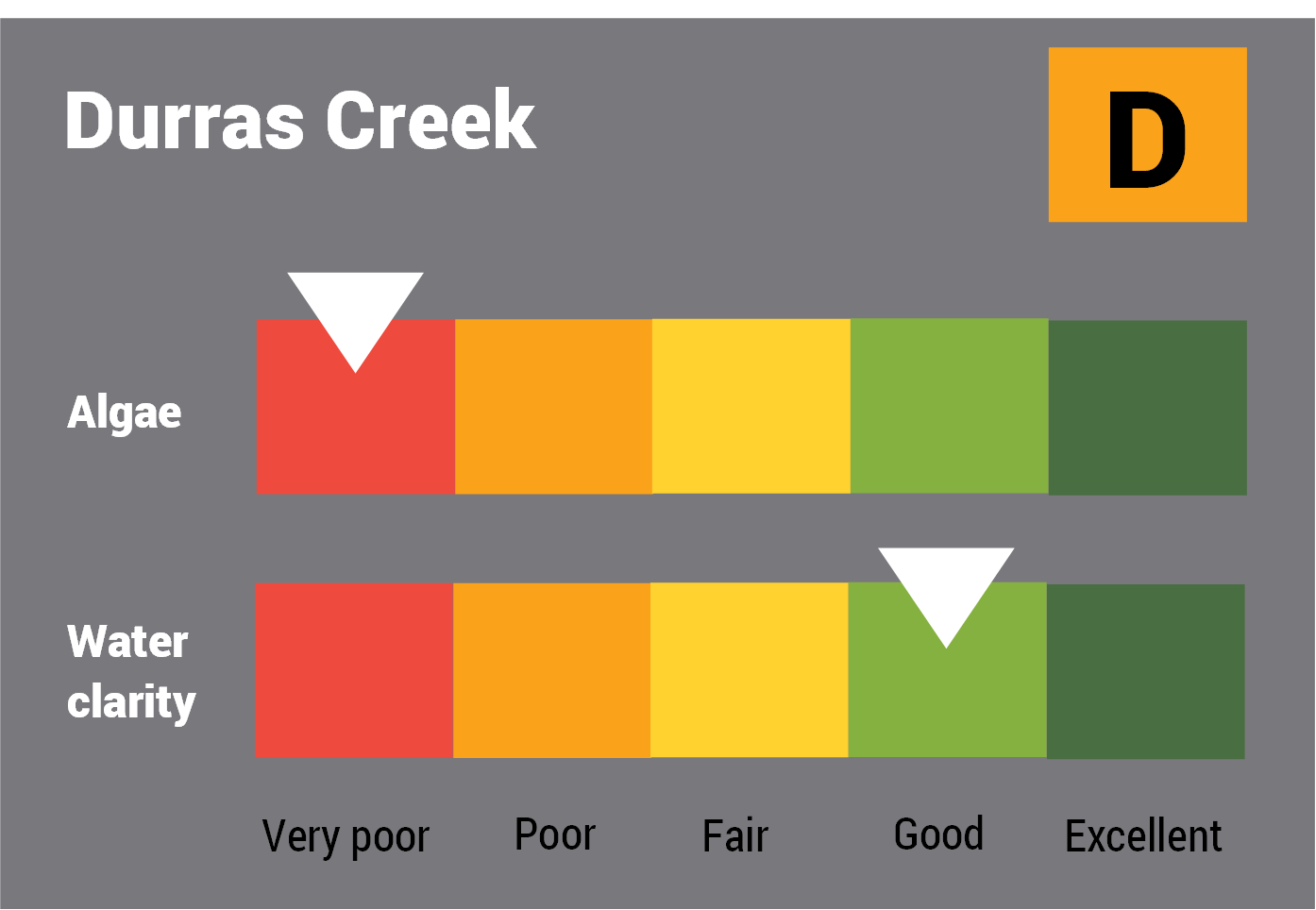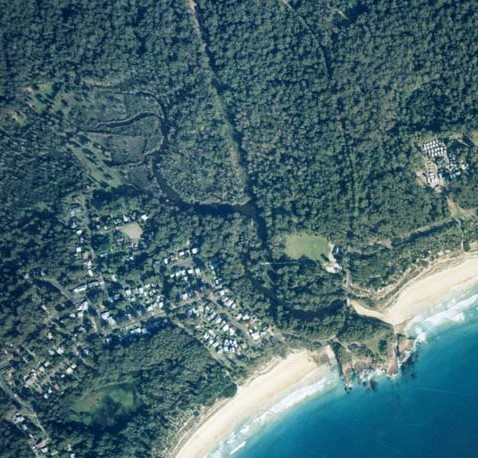Durras Creek is an estuarine creek with an intermittently closed entrance. It is located on the south coast of New South Wales.
Durras Creek
Our water quality monitoring program has shown Durras Creek to have poor water quality. Find out more about the estuary and its unique features.
Water quality
As part of our water quality monitoring program we assess the water quality and ecosystem health of an estuary using a range of relevant indicators. We sample a subset of the estuaries between Wollongong and the Victorian border every 3 years. The most recent sampling in Durras Creek was completed over the 2014–15 summer when 2 sites were sampled on a monthly basis.

This report card represents 2 water quality indicators that we routinely measure: the amount of algae present and water clarity. Low levels of these 2 indicators equate with good water quality.
The report card shows the condition of the estuary was poor with:
- algae abundance graded very poor (E)
- water clarity graded good (B)
- overall estuary health graded poor (D).
Find out more about our estuary report cards and what each grade means. Read our sampling, data analysis and reporting protocols and find out how we calculate these grades.
Physical characteristics
Estuary type: Creek
| Entrance location |
Latitude (ºS) | –35.66 |
|---|---|---|
| Longitude (ºE) | 150.3 | |
| Catchment area (km2) | 5.9 | |
| Estuary area (km2) | 0.02 | |
| Estuary volume (ML) | 4.4 | |
| Average depth (m) | 0.2 | |
Water depth and survey data
Bathymetric and coastal topography data for this estuary are available in our data portal.
Land use
The catchment of Durras Creek has relatively low disturbance with 85% of the catchment located in Murramarang National Park. Grazing and urban areas around South Durras make up about 10% of the catchment.
National and marine parks
- Murramarang National Park is the largest conservation area in the Durras Creek catchment.
- This estuary flows into the Batemans Marine Park.
Citizen science projects
- The Budawang Coast Nature Map is an online data platform the community can use to record and identify biodiversity. Data collected is used to map the distribution of native plant and animal species from Moruya up almost to Kiama.
- iNaturalist’s Plants of Eurobodalla is a citizen science project that monitors plants found in the Eurobodalla region.
- Our South Coast Shorebird Recovery Program provides the opportunity for people to get involved in the protection and recovery of shore birds.
Community involvement
- Eurobodalla Landcare is a volunteer network of 24 Landcare groups on the New South Wales south coast.
- The Coastwatchers Association is a community environmental and conservation group based on the south coast.

Local government management
Local councils manage estuaries within their area unless the estuary is attached to a marine park.
Eurobodalla Shire Council manage this estuary, which is located in Batemans Marine Park.

